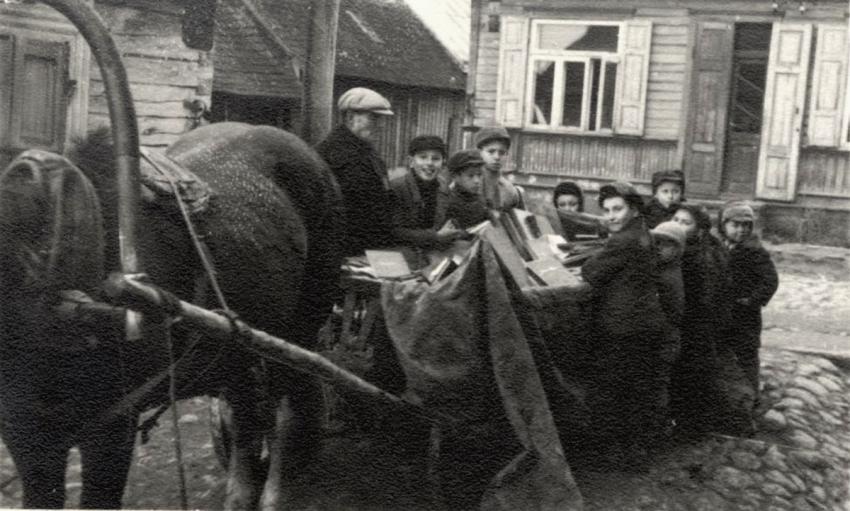In February 1942, the Germans ordered the Jews of the Kovno ghetto to hand in all their books. This was just a few months after the wave of mass murder of Kovno Jews and those who had been brought to Kovno from Germany, and several weeks after the Germans had ordered the Jews of the Kovno ghetto to hand in their furs. The order to submit books was part of the "Rosenberg Operation", the theft of Jewish cultural treasures supervised by Nazi ideologue Alfred Rosenberg. In response, the Jews of Kovno tried to hide books. Some were passed from one to the other, some were buried underground, and the few that survived the Holocaust were sent to the National Library in Jerusalem for preservation.
The Germans occupied Kovno, Lithuania in June 1941, and within some 2 months, they had murdered approximately 7,000 of the 37,000 Jews in Kovno. In August, a ghetto was established in Kovno where the remaining Jews were incarcerated, and in late 1941, within a month, another 20,000 Jews who had been brought from different cities in the German Reich were murdered at the "Ninth Fort" near Kovno. After these Aktions, an atmosphere of terror prevailed in the ghetto, with daily random killings, and inhabitants being seized for forced labor.
In December 1941, the Jews of the ghetto were ordered to hand in the furs that had not yet been stolen from them. In January 1942, the first workshops opened in the ghetto. In time, their number rose to 44, with 4,600 workers. In early February, hundreds of Jews were forced to leave the ghetto for forced labor in the Riga ghetto. Most of them never saw their families again.
On 27 February, an order was issued stipulating that the Jews were submit all books in their possession. This was a harsh blow for the ghetto inhabitants. The only distraction from their daily hardships was being snatched from them. Over 100,000 books were confiscated, including books of great value. Jews who were fluent in Hebrew were taken to sort through them. Jewish books were to be given to the staff of the "Rosenberg Operation" – the Nazi theft of Jews cultural treasures – so that they could be sorted pending shipment to Germany. Valuable books were boxed and sent to Germany, while the rest were sent to be processed into paper. Members of the Zionist underground and other youngsters in the ghetto managed to hide some Hebrew books in containers that they buried in the ground. Many youngsters took part in the book rescue operation, as well as some of the wagon drivers who had been ordered to collect the books.
After the war, books from Kovno’s Mapu library were found in Germany and brought to Israel. Most of them are preserved in the National Library in Jerusalem.
In the photograph, we see a wagon with books collected from Kovno ghetto inhabitants, as per German orders. Next to the wagon, from right: Shalom Eilati. Second from left: Shimon Volva.
Yad Vashem Photo Archives, 7003/83

